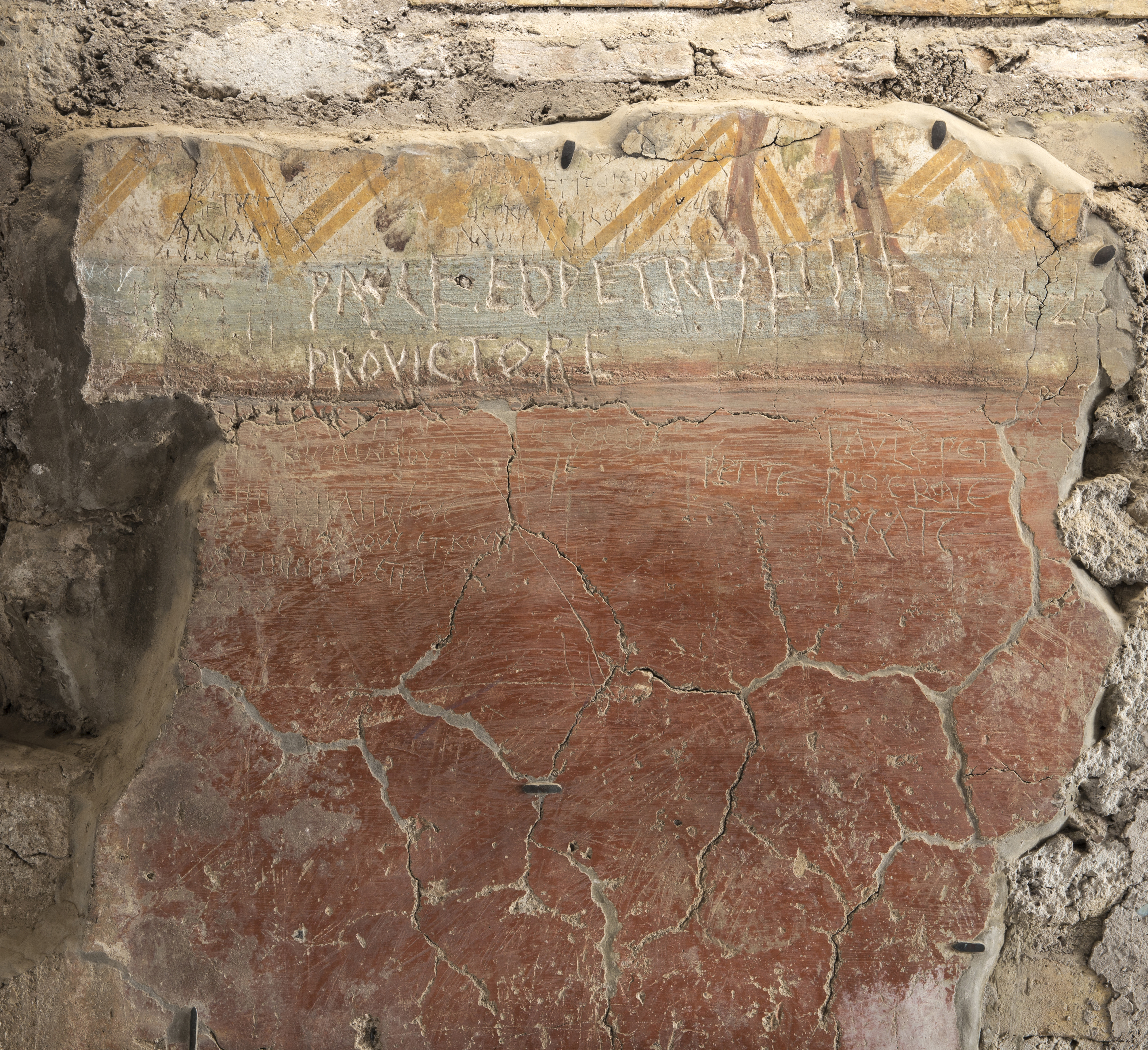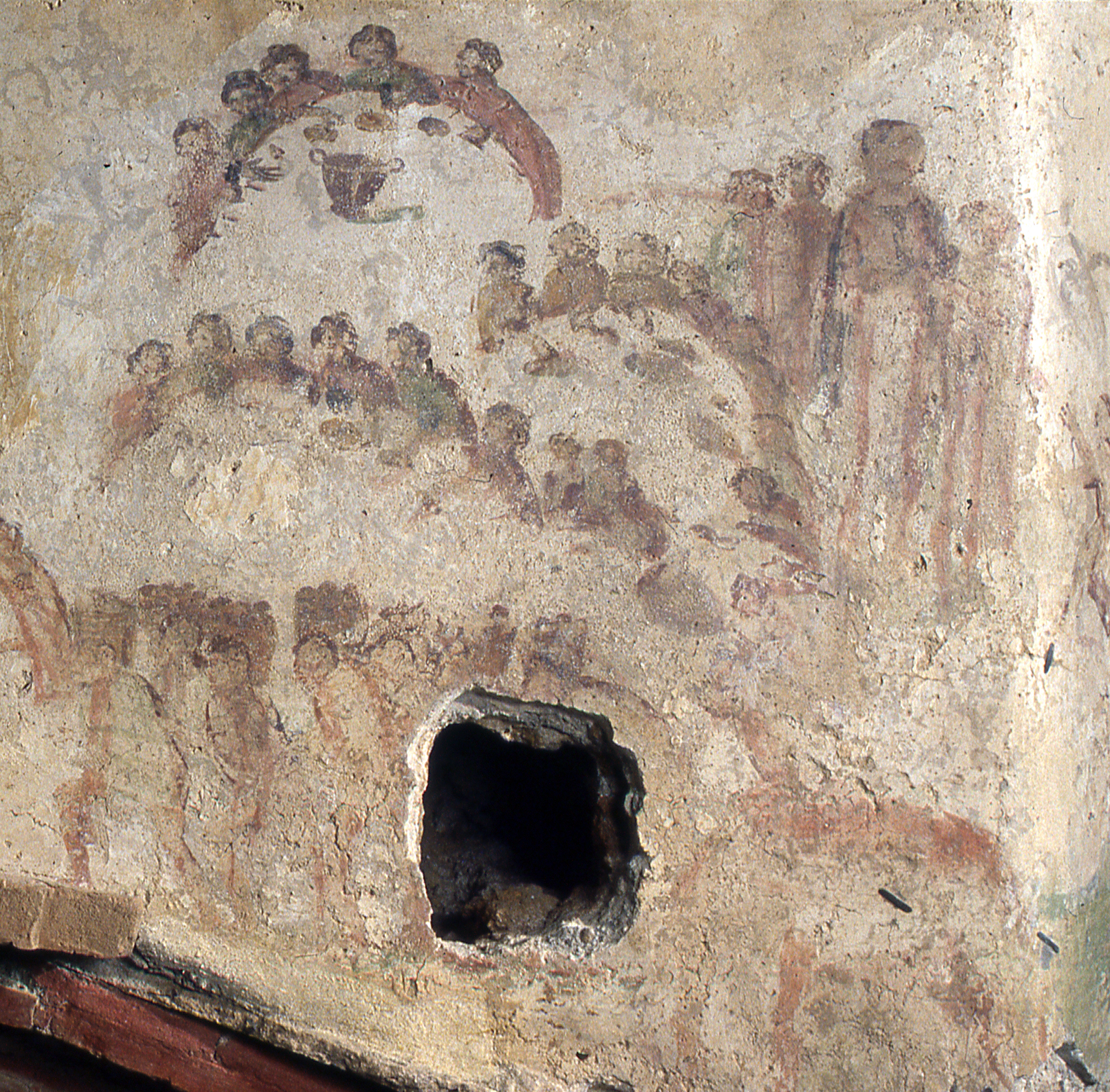The catacombs are underground areas that were born between the end of the second and the beginning of the third century AD, used for the burial and funeral commemoration of the members of the Christian community.
These burial grounds were dug mainly in the tuff and in the pozzolana, as well as in other types of soil characterized by ease of processing and great resistance, such as to guarantee the creation of complex systems of tunnels and cubicles structured on different floors.
Some of these rooms are richly decorated, others have housed the tombs of the martyrs who during the Middle Ages attracted the devotion of numerous pilgrims.
The place where the Catacomb of San Sebastiano stands was in ancient times a deep depression, used as a pozzolana quarry and called ad catacumbas (or “near the cavities”), a name that has become synonymous with an underground cemetery.
Since the first century, the site has been intensely exploited and built: the underground galleries were reused to obtain burial niches, on the surface, however, several columbaria were built and at least two residential systems (the so-called small villa and large villa) equipped with remarkable pictorial wall decorations.
Around the middle of the second century, the bottom of the valley was buried to create a pitch, on one side of which three mausoleums were built in succession (by Clodius Hermes, by the Innocentiores, by the Ax).
A further burial of the area was made to give space to the construction of the triclia, a portico bordered by a wall on which numerous graffiti invocations addressed to the SS. Peter and Paul, who were venerated together in this place around 250.
On the site, then, the emperor Constantine (306-337) had a basilica in the shape of a Roman circus (called "circiforme").
Meanwhile, already in the third century, the catacomb that housed the tombs of the martyrs Sebastian and Eutichio began to develop underground.
Full tickets € 12,00 (Ticket € 10,00 + Booking fee € 2,00)
Reduced tickets € 9,00 (Ticket € 7,00 + Booking fee € 2,00)
Free tickets
Languages available for guided tours: Italian, English, French, Spanish and German.
For others entrance times, languages and days available, write to info@omniavaticanrome.org
SAINT SEBASTIAN
Address: Via Appia Antica, 136

Our commitment is to offer pilgrims and visitors, through the catacombs, an experience of communion with the testimonies of the first Christian communities, which tell and illustrate, in an extremely suggestive way, the roots of faith and the horizon of Christian hope.
Mons. Pasquale Iacobone
President of the Pontifical Commission for Sacred Archaeology

Below the Constantinian Basilica, we can see the mausoleums of the Innocentiores and of the Ax are characterized by an elegant stucco decoration, unusual for catacombs.
The mausoleum of Clodius Hermes, on the other hand, preserves refined frescoes inside that recall the three main moments of the funeral rite, while on the outer wall of the terrace above it is possible to witness a rich funeral banquet.
On the back wall of the triclia, also known as memoria apostolorum, you can read more than five hundred graffiti invoking the intercession of the apostles Peter and Paul.
Very monumental, thanks to the intervention of the presbyters Proclino and Ursus, at the beginning of the sixth century, is the tomb of the martyr Sebastian.
In the ancient right aisle of the Constantinian basilica, it is possible to visit the museum of sarcophagi, an important testimony of the funerary sculptural art of late antiquity.
hide